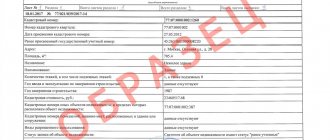Let's start with the fact that the procedure for common shared ownership is regulated by Article 244 of the Civil Code of the Russian Federation. It is necessary to distinguish between such concepts as shared ownership, when a share is determined for each of the owners, and joint ownership, when the shares are not defined. The disadvantages of joint ownership of real estate are obvious:
- Without the consent of the co-owners, it is impossible to make repairs or install air conditioning in the apartment;
- you cannot register yourself or your family members in the apartment unless there is the consent of other participants in shared ownership;
- the law establishes the right of first refusal - before selling the ownership of his share to a third party, the owner is obliged to offer it to other participants in the property at the price at which it is sold;
- a share in an apartment represents some virtuality, so selling a share in joint ownership is much more difficult than with a dedicated share;
- it is not possible to rent out a share in the apartment; this requires an agreement on the joint disposal of property and the allocation of a share in kind;
- if there is a creditor, there is a possibility of receiving from him a demand for the allocation of the debtor’s share from the common shared property. If the allocation of a share is impossible or other owners object to this, the creditor has the right to demand the sale of the share by the debtor to the remaining participants in the common shared ownership at the market price.
Division of an apartment in shared ownership
Common shared ownership right is the right when the shares of each owner from the common property are determined. Allocation of rights implies the transfer of part of the property in kind through the provision of ownership of a part of the apartment or by paying monetary compensation for this share. The division of an apartment in shared ownership can be carried out in two legal ways:
- Contractual allocation of a share is a division of ownership based on mutual agreement of the parties. Participants can independently reach an agreement on the procedure and conditions for the division of property or contact the judicial authorities.
Important! It is necessary to distinguish between the concepts of division of common property and allocation of a share from common property. In the first case, the division entails the termination of the right of common property, an equal right of ownership to each share arises, but the allocation of a share occurs without the termination of this right; citizens who have separated their property from the common property are subsequently deprived of the right to common property.
- Judicial allocation of a share is made by allocating a share in kind in accordance with a court decision. If a share cannot be allocated due to its insignificance relative to other shares, the owner is awarded monetary compensation from the funds of the remaining shareholders. After receiving compensation, the owner loses his rights to a share in the property.
Property that is in shared ownership can be divided by agreement between all owners, and if no agreement is reached on the method and conditions of division, through the court.
Property not subject to division Certain types of property determined by law are not subject to division. In particular, such property includes: 1) indivisible things, that is, things the division of which in kind is impossible without destruction, damage or changing the purpose of the thing (for example, a car); 2) common property of the owners of premises in an apartment building; 3) property constituting a mutual investment fund; 4) property constituting the mortgage coverage; 5) monuments and ensembles, including those related to the housing stock, as well as land plots located within the boundaries of their territories. In addition, division of property in shared ownership is not allowed if it is impossible without disproportionate damage to such property. Disproportionate damage should be understood as the impossibility of using property for its intended purpose, a significant deterioration in its technical condition or a decrease in material or artistic value (for example, a collection of paintings, coins, libraries), inconvenience in use, etc. Let's consider the algorithm for dividing property located in shared ownership, using the example of real estate. An extrajudicial procedure for the division of property An extrajudicial procedure for the division of property is possible only if the remaining owners are ready to discuss the conditions of such a division and it is possible to reach agreements on the allocation of specific parts of the property to account for the shares of each of the participants. To divide property that is in shared ownership, by agreement of the parties, we recommend following the following algorithm. 1. Determine the parts of real estate for division When dividing real estate in kind, you should take into account the requirements that the real estate resulting from the division must meet. Thus, land plots formed as a result of division must comply with the requirements of the law, in particular, on the maximum minimum sizes and location of boundaries. If we are talking about a residential building or apartment, then the real estate objects formed as a result of the division must be isolated, suitable for living, have a separate entrance and independent communications. Thus, before division it may be necessary to carry out reconstruction and (or) redevelopment work. After the real estate objects resulting from the division have been formed, you should contact a cadastral engineer to carry out cadastral work, as a result of which technical and (or) boundary plans will be prepared showing the characteristics of the objects being formed. The contract may provide for the obligation of the cadastral engineer to place the technical and (or) boundary plans prepared by him for temporary storage in an electronic storage facility maintained by the rights registration authority. If provided for in the contract, the plans can also be drawn up in the form of paper documents and issued to you. 2. Conclude an agreement on the division of real estate with all owners. The agreement specifies the address, cadastral number and other characteristics of the property, information about the owners, as well as the division procedure. As a general rule, the value of the property allocated to each of the co-owners should be proportional to his share. If the value of the allocated property is disproportionate to the share, the difference may be compensated by an appropriate monetary payment or other compensation. The provision for compensation must be reflected in the agreement. The agreement is drawn up in writing according to the number of property owners and must be signed by each of them. Such an agreement does not require mandatory notarization, unless you submit documents to Rosreestr by mail. 3. Contact Rosreestr For state cadastral registration and registration of ownership rights to real estate formed as a result of the division, as well as termination of the right of common shared ownership and deregistration of the original property, the following documents must be submitted to Rosreestr: 1) identification documents of the applicants ; 2) statements from each of the co-owners; 3) agreement on the division of real estate; 4) title documents for the original property; 5) a notarized power of attorney for the representative (if the documents are submitted by the representative). If a technical or boundary plan is placed in electronic storage, the identifying number of the plan can be indicated in the application. In this case, submission of the plan itself will not be required. Documents can be submitted to Rosreestr in one of the following ways: - directly through “My Documents” (MFC) (regardless of the location of the property according to the list of departments that accept on an extraterritorial basis posted on the Rosreestr website). In the city of Goryachy Klyuch, documents for state registration are accepted only through “My Documents” (MFC), except for acceptance on an extraterritorial basis; - by postal item with a declared value when forwarding it, a description of the contents and a notification of delivery (in this case, the authenticity of the applicant’s signature on the application must be notarized, the agreement and power of attorney of the representative must be notarized, and copies of identification documents must be attached); - in the form of electronic documents via the Internet, for example through the official website of Rosreestr. To register property rights, you must pay a state fee. It is not necessary to submit a document confirming payment of the state fee along with the application. The applicant has the right to do this on his own initiative. However, if there is no information about the payment of the state duty in the State Information System on state and municipal payments, after five days from the date of filing the application, Rosreestr will return the application and the documents attached to it without consideration. Amount of state duty The amount of state duty for registering ownership of newly formed real estate is: - 350 rubles. - in relation to a land plot intended for personal subsidiary farming, dacha farming, vegetable gardening, horticulture, individual garage or housing construction; — 2,000 rub. - in relation to other real estate objects. If it is possible to submit an application and pay the state fee through government services portals and other portals integrated with the Unified Automated Identification of Information and Logistics, the state fee is calculated taking into account a coefficient of 0.7. If at the time of submitting the application the state duty has not been paid, the applicant is issued or sent information containing a unique payment identifier (unique accrual identifier) necessary to confirm the fact of payment for a specific service, indicating the date by which it must be paid. 4. Receive documents after cadastral registration and state registration Cadastral registration and state registration are carried out within 10 working days from the date Rosreestr receives the application and documents. If the application was submitted through “My Documents” (MFC), then the period for consideration of the application will be 12 working days. This period begins on the next working day after the date of receipt of documents. State registration and cadastral registration are certified by an extract from the Unified State Register of Real Estate, which can be sent to you electronically. Judicial procedure for the division of property If an agreement on the method and conditions for the division of property in shared ownership could not be reached, the interested owner has the right to demand the allocation in kind of his share from the common property in court. Other owners also have the right to file counterclaims for the allocation of their shares in kind with the termination of the right of shared ownership of the property. To divide property in shared ownership in court, we recommend adhering to the following algorithm. 1. Prepare a statement of claim and the necessary documents. In the statement of claim, you should identify the real estate property (indicate the cadastral number, address, area, other characteristics), describe the nature of use of the property that has developed between the owners, indicate which part of the property should be allocated to the plaintiff and which to the defendant, as well as the amount and calculation of compensation (in case of disproportionate share). The following documents should be attached to the statement of claim: 1) documents confirming the possibility of division (allocation) of real estate, for example, a conclusion from a construction and technical organization on the possibility of the proposed division (allocation); 2) legal documents for real estate; 3) a receipt for payment of the state fee for consideration of the case in court, the amount of which, as a rule, is calculated based on the price of the claim; 4) copies of the statement of claim according to the number of defendants and third parties. Depending on the circumstances of the case, other documents may also be required. 2. File a statement of claim with the court and take part in the court hearing. The statement of claim is submitted to the court of general jurisdiction at the location of the property. During the trial, to resolve the issue of the possibility of the proposed allocation and the proportionality of the allocated part to the owner’s share, the court may order a judicial construction, technical, land management and assessment examination in the case. To resolve a legal dispute, you may need qualified legal assistance. If a corresponding written petition is filed, the court may recover the costs of paying for the services of a representative in full or in part from the defendant. 3. Contact Rosreestr By analogy with an out-of-court settlement of the issue, in the event of a positive court decision on the division of property or the allocation in kind of a share in real estate, it is necessary to carry out cadastral registration and register ownership of the property. To do this, the following documents must be submitted to Rosreestr: 1) an identification document of the applicant; 2) application for state cadastral registration and state registration; 3) a court decision that has entered into legal force in two copies; 4) a notarized power of attorney (if the documents are submitted by a representative). The procedure for submitting documents, as well as paying state fees, is similar to that described in step 3 of the out-of-court section.
Division of premises in joint ownership
Joint ownership implies the existence of a right when citizens own property jointly without precisely determining the size of shares for each of them. The allocation of a share from joint ownership is carried out after a procedure for determining the size of the shares of all participants, and if there is no indication in this regard in the legislation or agreement of the parties, then the shares of the co-owners are usually considered equal. The procedure for allocating shares in joint ownership corresponds to the procedure for allocating shares in apartments with shared ownership, that is, by contract or by applying to the judicial authorities.
Why is it necessary to allocate shares?
Allocation of shares may be required in the following cases:
- if one of the owners wants to dispose of the share at his own discretion - sell part of the living space belonging to him, place tenants in it or live in it himself;
- if the owners cannot determine who will pay utility bills for the apartment;
- if other disputes arise between the owners that do not allow full use of the housing with comfort for each of them.
Agreement on determining shares in an apartment
The standard version of the agreement on determining shares between co-owners must contain the following information:
- Title of the document;
- place and date of document preparation;
- Full name, passport and address information, birth information of each party;
- data about the property - location of the apartment, indicating the full address and size of the total area;
- details of the certificate of ownership or other title document for the apartment;
- registration number of the entry in the Unified State Register of Rights to the property;
- cadastral number of the apartment;
- the size of the shares of the parties to the agreement;
- all available information about encumbrances imposed on the common property of the parties to the agreement;
- the number of copies in which this agreement is drawn up;
- signatures of each party.
After concluding an agreement on the allocation of shares, the owners must submit an application for state registration of ownership rights, attaching the following documents:
- identification document of the applicant;
- extract from the Unified State Register;
- floor plan of the apartment from BTI;
- receipt of payment of state duty;
- other documents, for example, a power of attorney for a representative.
Important! Like any agreement, the agreement on the determination of shares may be subject to changes, which requires the mutual consent of all co-owners.
Separation through court
If the parties were unable to reach a common denominator during the negotiations, the owner who wishes to allocate a share in kind must apply to the court with a statement of claim.
- This application contains: Complete information about the applicant himself (passport details, registration);
- Complete information about the property (address, area, description);
- Rules for the use of premises and common areas;
- Technical justification for the possibility of allocation;
- If necessary, the amount of the desired compensation;
- A reasoned request for permission from the court to carry out the separation procedure.
You can order it from BTI or another company that has the right to carry out construction expertise;
The court will study the information received, listen to the parties' arguments and make a decision.
If the decision is positive for the owner who is going to “stand out”, he needs to register the resulting right. The remaining co-owners will go to register changes in title.
Selling a share in an apartment: latest news
In August 2015, a bill was introduced to the State Duma of the Russian Federation on amendments to the Civil Code of the Russian Federation in matters of adjusting the alienation of property in common shared ownership (to date, this bill has not yet been adopted). Thus, the current version of Art. 246 of the Civil Code of the Russian Federation establishes the possibility of disposing of common property at the discretion and agreement of the property participants, including, the norm provides for the right of the owner of the share to independently decide on its alienation. If the legislative initiative is approved, it will be possible to dispose of property in shared ownership only by a court decision. So, if one of the co-owners wants to sell or donate his share, he must apply to the court for the appropriate permission. The exception is cases of leaving a share of property as an inheritance; the legislator gives the right of choice to the owner. The authors of the bill consider its main goal to provide additional guarantees to other participants in common shared ownership, who, by virtue of Article 250 of the Civil Code of the Russian Federation, have a preemptive right to buy out the share being sold. However, now the norm establishes no more than 1 month for this action, which is considered an insignificant period in a situation of raising funds to buy out a share. The participation of the court will allow taking into account the interests of all owners, based on the real needs of the participants and their financial situation.
A loan for everyone
A loan is not made in heaven, and a commitment to pay the bank for 25 years does not guarantee a happy marriage.
What to do if the family breaks up, but the mortgage remains? The first thing you need to know: even if the loan is issued to only one of the spouses, the other will not be able to stay in any way. Was the home purchased during marriage? Spouses are automatically co-borrowers, even if this is not indicated in the agreement. And if the husband, the main borrower, packed up his things, left and stopped paying the loan, then the wife will have to do this.
Moreover, the courts recognize the mortgage debt as the common debt of the spouses, regardless of how the mortgaged apartment is divided, explains Daryana Epikhina, lawyer at Petrol Chilikov. That is, the mortgage can be divided equally, even if the apartment is divided into unequal shares.
An apartment purchased with a mortgage is divided during a divorce, as is the mortgage itself. To do this, the spouses must allocate shares in the ownership of the apartment and then divide the loan. It is possible to conclude a separate agreement with each spouse and adjust the payment schedules taking into account the level of wages. The ex-husband and wife will each pay the mortgage for their own share, and the optionality of one spouse in this matter will not affect the other.
If the mortgage is issued to the husband, the wife is recognized as a co-borrower
An apartment and a mortgage loan cannot always be divided during a divorce. For example, when applying for a military mortgage, banks require the military to enter into a marriage contract. According to its terms, in the event of a divorce, the borrower becomes the sole owner of the home and continues to repay the loan alone. But the wives of such mortgage holders risk being left homeless.
Finding an alternative
Even if the loan and meters are divided, joint ownership of an apartment can be a burden for former spouses. So in practice, popular options are those that allow you to divide the mortgaged apartment before repaying the loan.
If the mortgage is paid off by less than 10-20%, one of the spouses may waive the rights to the apartment in favor of the other. For the paid part of the loan, he has the right to demand half of the deposited amount, explains Maria Litinetskaya, managing partner of Metrium. In this case, the obligation to pay the mortgage falls on only one of the spouses, and to avoid discrepancies, the bank enters into a new mortgage agreement with him.
Former spouses can sell the mortgaged apartment. At the same time, the property is pledged to the bank, so they either find a buyer who is ready to repay the loan, or someone who is ready to reissue the mortgage. It is possible that the spouses find money to pay off the balance of the debt, and then sell the home and divide the proceeds.
For many years
How long can ex-spouses divide property? The statute of limitations is usually three years, but there is a nuance - from when to count it. The opinion that from the moment of divorce is incorrect, is correct - from the moment when the spouse learned or should have learned about the violation of his right to jointly acquired property, says Daryana Epikhina.
For example, a few years after the divorce, the ex-husband, who did not renounce the rights to a shared apartment, but also did not live in it, learns that the ex-wife has decided to sell this property. Or the wife sold the apartment, but did not pay monetary compensation to the ex-husband. In these cases, the statute of limitations will be counted from the moment of sale of the home. And this may be beyond the three-year period.








